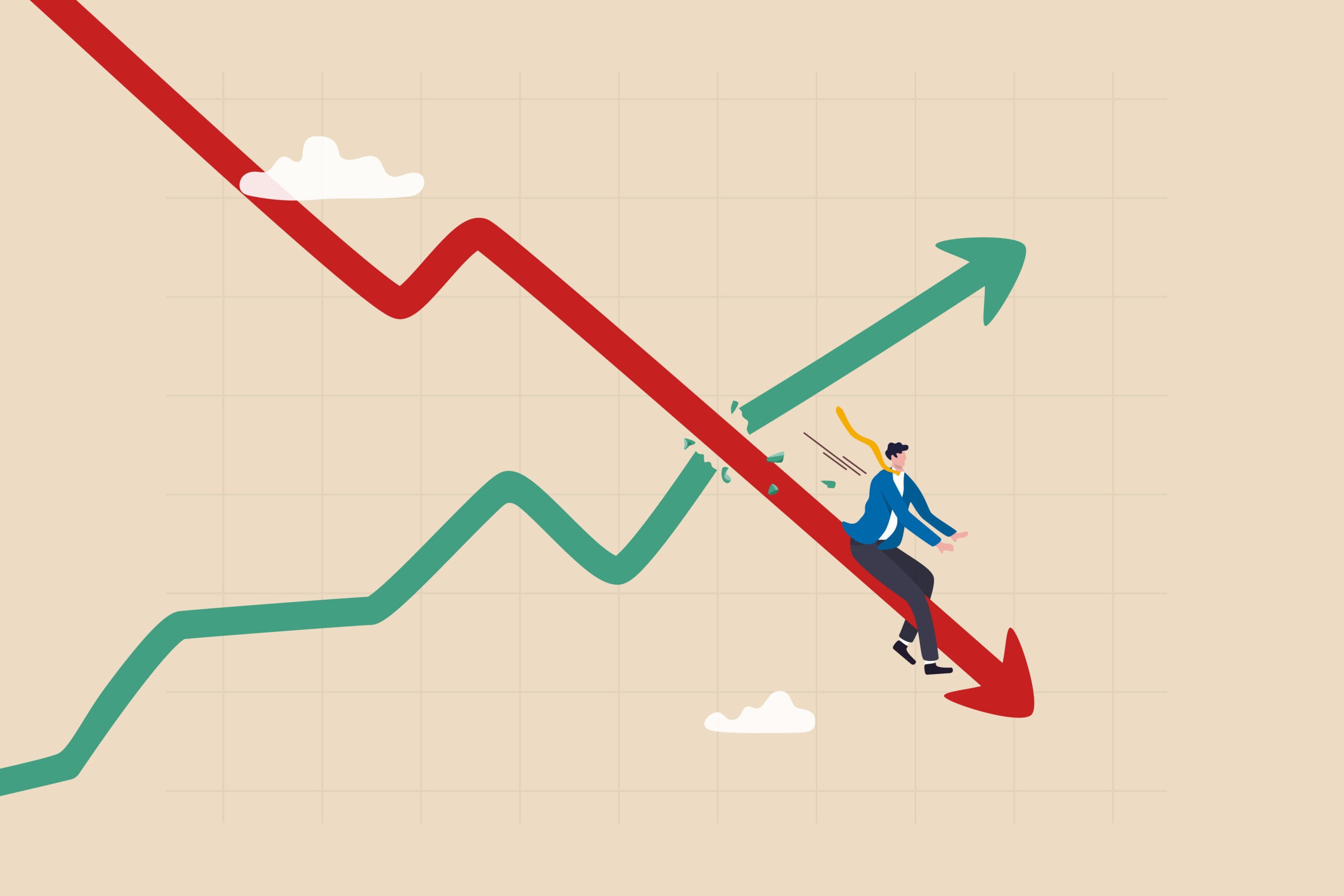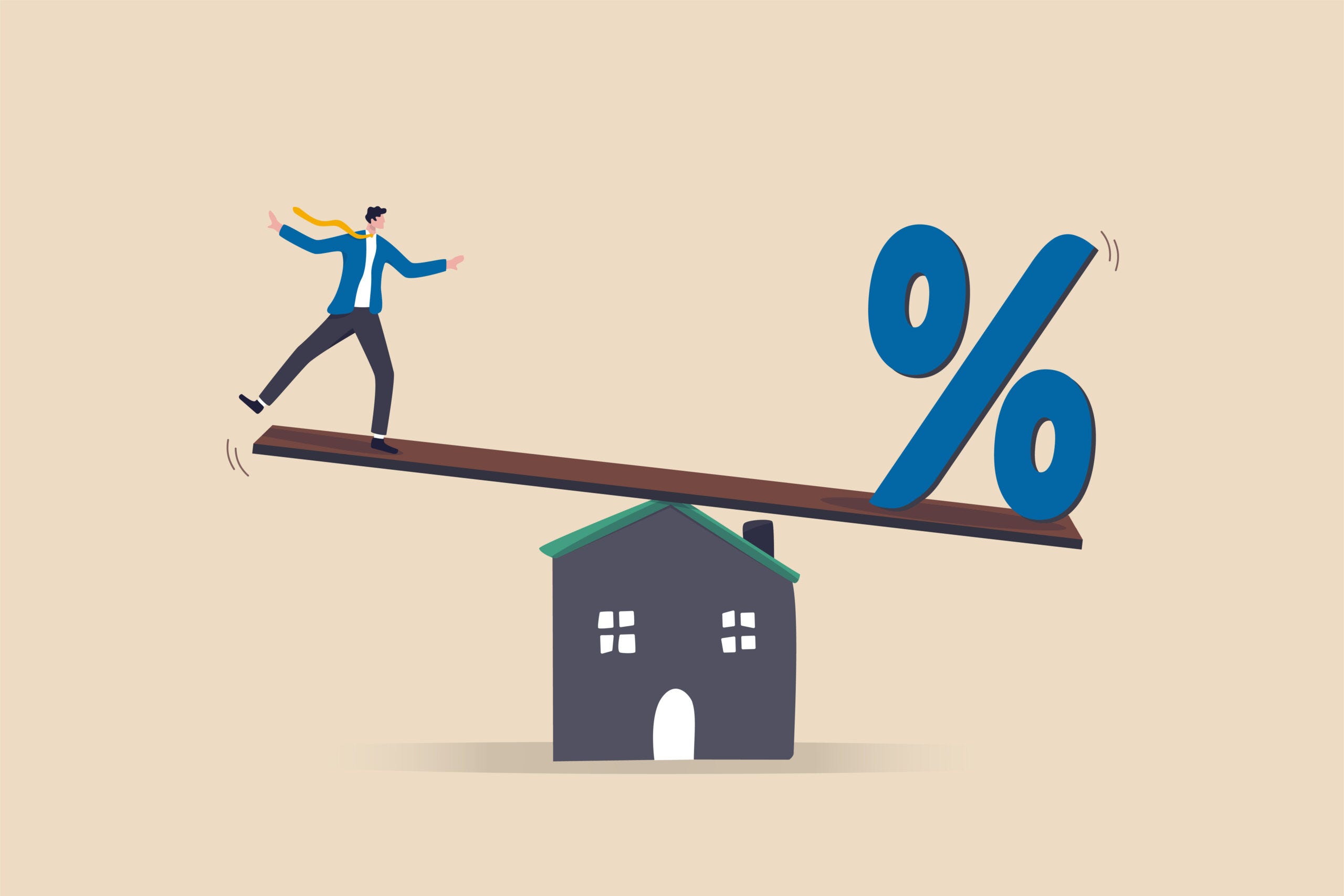Were the good old days really all that good? Sure, when mortgage rates were below 3%, it was a lot cheaper to purchase a house, but we were also in the middle of a global pandemic.
At the start of 2021, the average rate for a 30-year fixed mortgage was 2.65%, according to data from Freddie Mac. During the homebuying boom of 2020 and 2021, the number of borrowers taking out new mortgages reached a more than two-decade high.
Over the past two years, a combination of high mortgage rates, low housing inventory and sluggish wage growth has crippled affordability for homebuyers.
While many are holding out for mortgage rates to fall, it’s unlikely we’ll see 2% mortgage rates any time soon. In fact, experts hope we don’t.
A return to that kind of low-rate environment would indicate major problems in the economy, said Alex Thomas, senior research analyst at John Burns Research and Consulting.
Mortgage rates typically fall during a recession. But a recession also comes with widespread unemployment, increased debt, investment losses and overall financial instability.
In today’s housing market, homebuyers should have realistic expectations. Experts predict mortgage rates to inch closer to 6% by the end of the year as inflation cools and the Federal Reserve starts to cut interest rates. Record-low mortgage rates aren’t in the cards again, and that’s likely for the best.
How did mortgage rates drop below 3% in the first place?
Economic uncertainty and market volatility — whether during an election cycle or a pandemic — impact the direction of mortgage rates. It’s often said that bad news for the economy is good news for mortgage rates, and vice versa.
A significant lever for mortgage rates is the federal funds rate, which the Fed keeps low when it needs to stimulate economic growth. For example, during the 2008 financial crisis, the Fed slashed that benchmark rate to zero to bolster the economy. When there were signs of recovery in 2015, the central bank started raising interest rates again, sending mortgage rates into the 4% to 5% range until 2020.
The COVID-19 pandemic sparked another economic crisis. To incentivize people to borrow and spend money — and avoid a prolonged recession — the Fed once again cut the federal funds rate to near zero and pumped money into the economy by purchasing government bonds and mortgage-backed securities. Mortgage interest rates fell quickly, bottoming out in the mid-2% range in 2021.
But the combination of supply shocks, record-low rates and an extreme increase in money supply from government stimulus helped send prices way up, according to Erin Sykes, chief economist at NestSeekers International.
In early 2022, the Fed had a new problem on its hands: inflation.

💰 Federal Reserve monetary policy
In a recession, the Federal Reserve tries to spur economic growth through quantitative easing, a monetary policy that consists of cutting the federal funds rate to encourage lending and borrowing to consumers, and increasing its purchase of government-backed bonds and mortgage-backed securities.
If the Fed needs to slow the economy down and reduce the money supply in financial markets, it does opposite: quantitative tightening. By increasing the federal funds rate and tapering its bond-buying programs, the central bank raises the cost of borrowing money, which puts upward pressure on longer-term interest rates, like 30-year fixed mortgage rates.
What caused mortgage rates to surge again?
With prices surging in 2022, the Fed’s main tool was to adjust interest rates, making credit more expensive and disincentivizing borrowing. As a result of a string of aggressive rate hikes, the federal funds rate went from near zero to a range of 5.25% to 5.5%, where it’s remained since last summer. Average mortgage rates skyrocketed, peaking past 8% last October.
Although inflation has gone down, the Fed isn’t ready to start lowering rates just yet. The central bank would like to see evidence of a weaker economy (including consistently lower inflation and higher unemployment) before making any adjustments to its monetary policy.

📈 How the Fed impacts mortgage rates
Though the Federal Reserve doesn’t directly set mortgage rates, it controls the federal funds rate, a short-term interest rate that determines what banks charge each other to borrow money. When the federal funds rate moves up, it impacts longer-term interest rates, like 30-year fixed mortgage rates, as banks raise interest rates on home loans to keep their profit margins intact.
Why won’t mortgage rates move toward 2% again?
Economists and housing market experts agree that mortgage rates will fall over the next several years, but not below 3%.
When mortgage rates hit their record lows just a few years ago, the federal funds rate was near zero. As the Fed starts cutting rates later this year, the plan is to do so slowly and incrementally. Barring another major economic shock, the Fed projects the federal funds rate will take only modest adjustments down.
In the most recent policy meeting, Fed Chair Jerome Powell remarked that the federal funds rate “will not go back down to the very low levels that we saw” during the financial crisis, suggesting that the economy can adapt to a more “neutral” benchmark rate range of between 2.4% to 3.8% in the long run, i.e., less tightening, but not too much easing from the current range of 5.25% to 5.5%.
The Fed would be forced to lower rates close to zero only if there were a dramatic economic shock, such as a pandemic or recession, said Selma Hepp, chief economist at CoreLogic. In that case, if the central bank started purchasing government bonds and mortgage-backed securities again, there’s a possibility mortgage rates could return to those record lows.
However, without such an upheaval, there’s a floor under how low mortgage rates will go, and it’s highly unlikely they’ll ever drop to their 2020-2021 levels.
“With the Federal Reserve ending quantitative easing and stepping out of the market for mortgage-backed securities, rates will settle at a much higher level,” said Matthew Walsh, housing economist at Moody’s Analytics.
Moody’s Analytics predicts mortgage rates will stabilize between 6% and 6.5% over the next few years. That’s high compared with a few years ago, yet it’s a historically normal range for mortgage rates.
How can homebuyers adapt to higher mortgage rates?
The housing market is frustrating, but prospective homebuyers are starting to come to terms with this new reality. Following the pandemic, people are moving on with their lives, whether that’s building a family, relocating, downsizing or upgrading.
For some households, that means making room in their budget for a monthly mortgage payment at a 6% or 7% rate.
When you monitor mortgage rate movement, you’re usually looking at national averages determined by weekly rate information provided by lenders. While those rates give a picture of the “typical” mortgage rate, that’s not necessarily the rate you’ll get when applying for a mortgage.
It’s possible to get a better deal on your mortgage.
To qualify for a mortgage, most lenders require you to have a minimum credit score of 620, but lenders offer the lowest mortgage rates to consumers with excellent credit scores, around 740 and above.
You might also consider purchasing mortgage points, also known as discount points. This is an extra fee you pay upfront in exchange for a lower interest rate. Each mortgage point typically costs 1% of the purchase price of a home and will lower your mortgage rate by 0.25%.
A shorter-term loan like a 15-year or 10-year mortgage will have a lower interest rate than a 30-year fixed mortgage. Your monthly payments will be higher with a shorter-term loan because you’re paying the loan off in less time, but you’ll save big on interest.
Buying a home is likely the biggest transaction you’ll make in your lifetime. Regardless of the market, carefully assess your needs and what you can afford.
And don’t hold your breath for 2% mortgage rates.




















+ There are no comments
Add yours